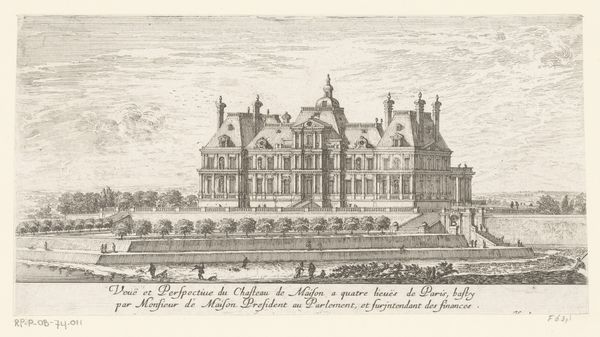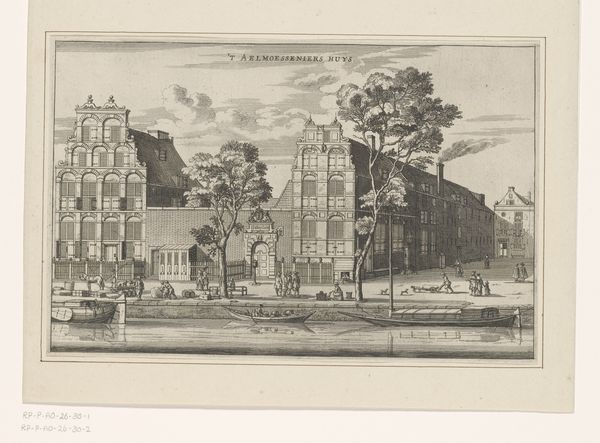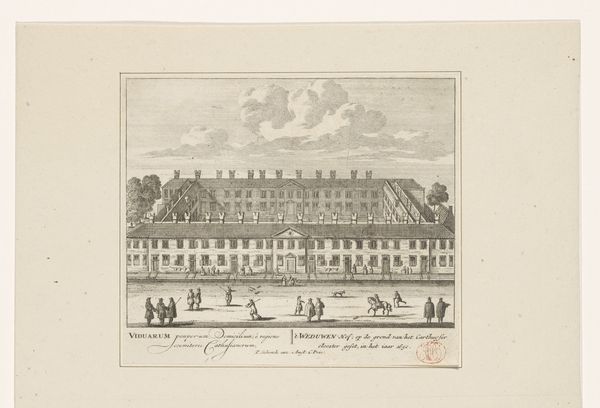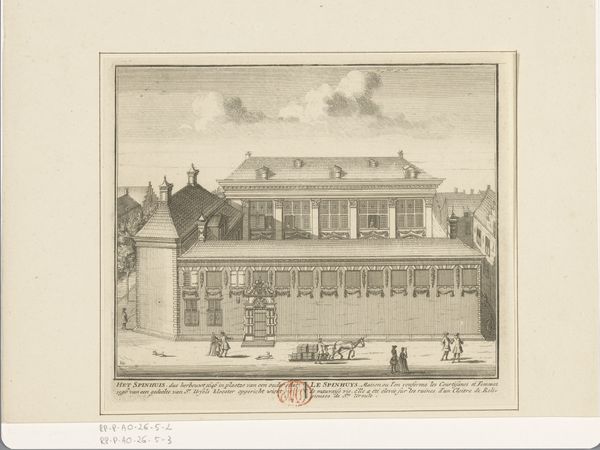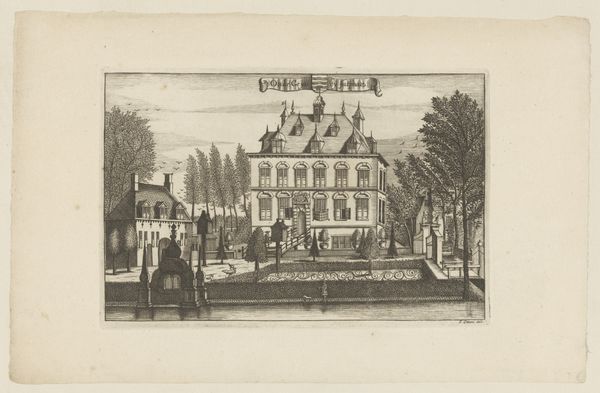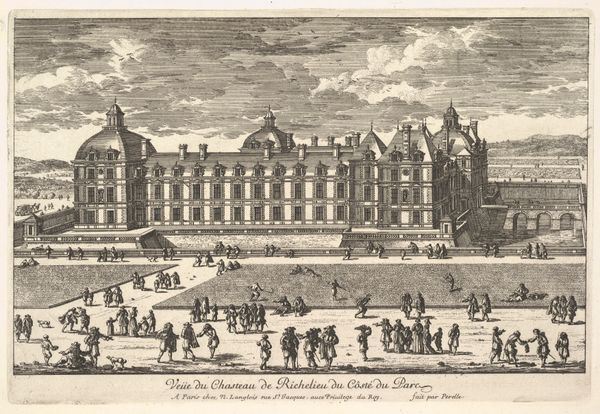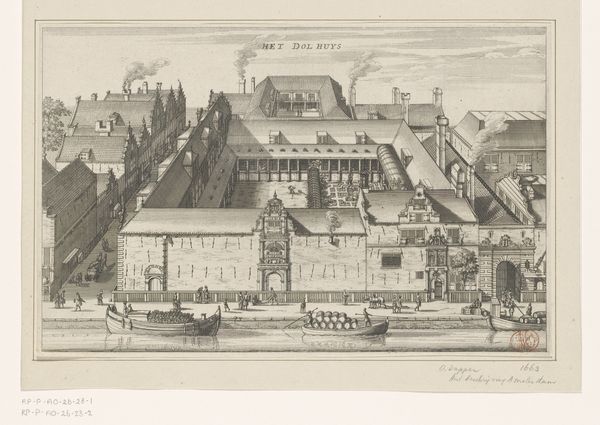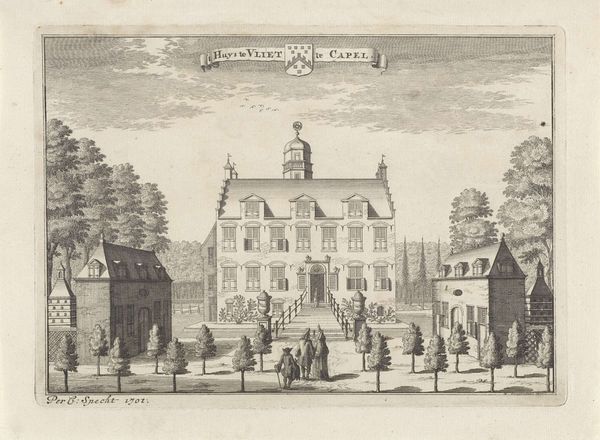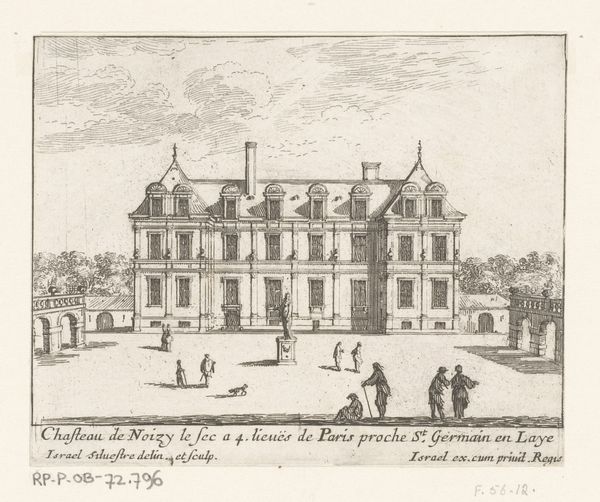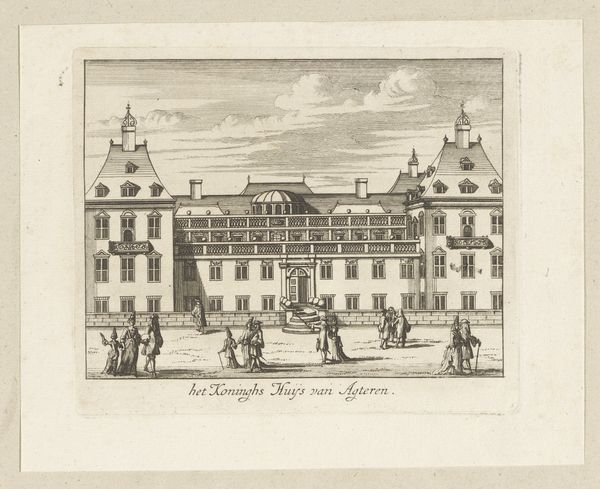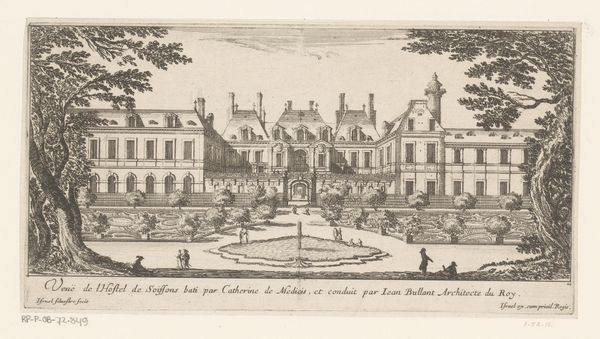
print, engraving, architecture
#
dutch-golden-age
# print
#
cityscape
#
engraving
#
architecture
#
realism
Dimensions: height 194 mm, width 299 mm
Copyright: Rijks Museum: Open Domain
Curator: Looking at this engraving, “View of the Walloon Orphanage on the Laurierstraat in Amsterdam” by Jacob van Meurs, created in 1663, the scene appears both busy and serene at once. Editor: It's certainly a world caught in monochrome, isn’t it? A stark depiction that feels somehow both documentary and distanced. There's a strong sense of social hierarchy, and it also exudes a cold and impersonal sensation, even though there are multiple figures scattered throughout. Curator: Indeed. As a print, likely intended for a wider audience, its precision served a purpose. This institution housed and educated Walloon orphans—children of French-speaking Protestant refugees—in Amsterdam, reflecting the city's role as a center for religious tolerance during the Dutch Golden Age. This image serves not only as a record, but also a visual representation of civic duty. Editor: Civic duty certainly carried a very particular weight during this period! I wonder, looking at the details—the orphanage taking up the largest, most detailed portion of the view versus the common citizens performing labor in the foreground—it reads as an exercise in solidifying power through philanthropy. Did this orphanage work towards integrating Walloon orphans into Dutch society, or did it serve to emphasize their marginalized identity as religious refugees? Curator: A valid question! There’s historical evidence suggesting it operated in both capacities, as you’ve proposed. Its governance and the education offered were aligned with integrating these children into Dutch society, however it did uphold cultural differences through its French language practices and distinct Protestant values. This served to provide stability while supporting an alternative identity that maintained unique practices. Editor: Thank you for that insight! And as a parting note, I find the architectural symmetry visually appealing, but that uniformity also gives me pause. A very visually captivating study of structure! Curator: It's certainly a snapshot of a society grappling with defining both care and identity. I believe the way Van Meurs depicted it adds a very tangible element to our historical understanding of that era.
Comments
No comments
Be the first to comment and join the conversation on the ultimate creative platform.
